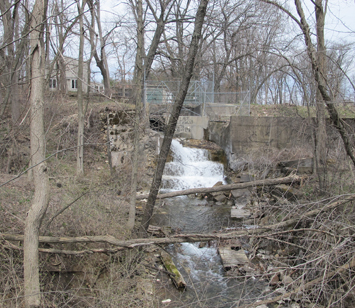Establishing a legal lake level on your inland lake -- Part 2
State law regulates the process of establishing, constructing and maintaining a legal lake level.
 Part 1 of this Michigan State University Extension series on establishing a legal lake level explains some of the potentially negative consequences for the lake, connected wetlands and downstream ecosystems when a lake’s water level is not allowed to fluctuate and flow through naturally. Although periodic flooding is possible on most inland lakes, the potential impact on riparian properties, drinking water wells and septic systems, at varying elevations along the shoreline, is an important consideration when artificially raising a lake’s water level.
Part 1 of this Michigan State University Extension series on establishing a legal lake level explains some of the potentially negative consequences for the lake, connected wetlands and downstream ecosystems when a lake’s water level is not allowed to fluctuate and flow through naturally. Although periodic flooding is possible on most inland lakes, the potential impact on riparian properties, drinking water wells and septic systems, at varying elevations along the shoreline, is an important consideration when artificially raising a lake’s water level.
Photo at right: Legal lake level control structure on a Michigan inland lake. Photo courtesy of Jane Herbert
A lake community may be able to establish a legal level for their lake through Part 307 of the Natural Resources and Environmental Protection Act (1994 P.A. 451 as amended). Pursuing a legal lake level to manage water level fluctuations is a process requiring numerous steps. Some of these include:
- The community, preferably represented by the lake association or lake improvement board, petitions the county board of commissioners (called “board” in following bullets) to initiate legal lake level proceedings. The petition must include signatures from two-thirds of the riparian property owners.
- The board passes a resolution to initiate the proceedings, including an engineering study to determine the cost and feasibility of the project.
- The board sets up a special assessment district to pay for the study and funding the construction and maintenance of the project if approved.
- The board directs their legal counsel to petition the circuit court for a hearing and determination.
- The circuit court holds a hearing on the recommendations of the engineering study and the study’s recommended lake elevation. At the hearing members of the community, and others, may provide testimony for or against the recommended level.
- Following the hearing the court may set a legal lake elevation and assign a county authority, usually the drain commissioner, to undertake the necessary actions to establish and maintain the legal level. The lake level may be controlled by some type of outlet structure that can be operated to raise or lower the lake level as needed or possibly a large capacity well to raise lake levels during low water periods -- an activity also regulated by the state.
- The county authority usually establishes a special assessment district to raise funds to pay for the structures and maintenance activities needed to manage the lake elevation set by the court. The special assessment district will include the riparian property owners benefitting from the new legal level.
Since the legal lake level is established by the circuit court, disputes over maintaining the level are usually resolved by filing suit in the court. While the state agencies may be involved in the initial proceedings to establish the legal level by providing information and data to the court, the agencies takes no part in the maintenance of the level or in resolving disputes.
Those interested in pursuing a legal level for their lake should begin by studying Michigan’s official guidance document on the law and the process – including sample petitions and resolutions.



 Print
Print Email
Email




